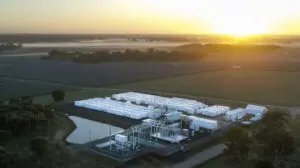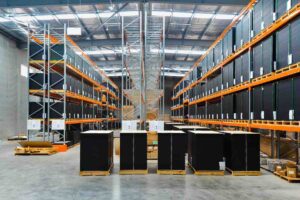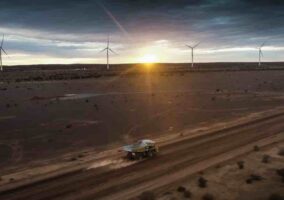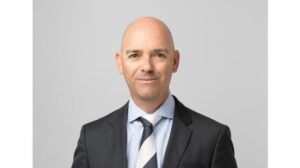Global asset manager BlackRock says it has raised more than $500 million, including a $100 million equity investment from the Clean Energy Finance Corporation, to help pay for the Waratah Super Battery that will play a key role in the shift from coal power to renewables in Australia.
The $1 billion battery Waratah battery will act as a kind of giant “shock absorber” for the grid, allowing power to flow into the major load centres around Sydney, Newcastle and Wollongong at maximum capacity and protecting against any major disturbances.
At 850MW and 1680MWh it will be the largest battery of its type in the southern hemisphere and one of the largest in the world.
Up to 700MW and 1400MWh of the battery capacity will be contracted to provide the “shock absorber” service at various peak periods, while the rest of the battery capacity will focus on other parts of the growing battery storage market.
The battery – which began construction in May at the site of the shuttered Munmorah coal generator on the NSW Central Coast – is being developed by BlackRock’s newly acquired battery offshoot Akaysha Energy, but it has received significant backing from both the CEFC, and an undisclosed sum from NGS Super.
Charlie Reid, BlackRock’s co-head of climate infrastructure in the Asia Pacific region, says the battery will add greater reliability and resilience to the power grid and will help Australia achieve its renewable ambitions.
“We firmly believe battery storage is the critical technology of today – applied both on a small scale in homes and for large-scale battery platforms like the Waratah Super Battery,” Reid said in a statement.
BlackRock bought Akaysha Energy in August last year and is also planning the Ulinda Park battery in Queensland and the Orana battery near Welllington in NSW.
The Waratah battery will receive quarterly payments under a what is known as a System Integrity Protection Scheme, similar to the deals struck by the original Tesla big battery at Hornsdale in South Australia, and the Victoria Big Battery near Geelong.
Unlike those agreements, however, the size of the payments to be made to the Waratah battery have not been released. It is designed to designed to act as a ‘shock absorber’ in the event of any sudden power surges, including from bush fires or lightning strikes.
Ian Learmonth, the CEO of the CEFC, said the investment had been made because long and short duration storage assets are critical to the future grid.
“Battery storage underpins a future balanced grid, ensuring that more clean energy can reach more consumers and providing network stability as coal continues to exit the network earlier than predicted,” he said in a statement.
“Our investment in the Waratah Super Battery supports a secure grid powered by renewable energy and fit for a future, low emissions economy.”
The CEFC has also backed the Hornsdale battery and the Victoria Big Battery, as well as the Capital Battery in the ACT. All three of those projects are owned by French renewable developer Neoen.
It is the first battery storage project in Australia for BlackRock and Akaysha, although the CEFC noted it had supported BlackRock in a number of projects under the Large Scale Solar PV Competitive Round to which CEFC was a lender.
Ben Squires, the chief investment officer at NGS Super said the investment will support its target of creating a carbon neutral investment portfolio by 2030.
Federal energy and climate change minister Chris Bowen says the CEFC investment in Waratah builds on the government’s $20 billion Rewiring the Nation program, which is being managed by the CEFC.
It also comes ahead of the new Capacity Investment Scheme, which Bowen says which will unlock around $10 billion of investment and add 6GW of new capacity to support grid reliability.
“Together we are working with states and other stakeholders across the board to deliver the electricity system strength needed to power Australia with cleaner, cheaper energy,” he said in a separate statement.
NSW energy minister Penny Sharpe said the new battery are critical to supporting the state’s transition to net zero “as soon as possible”
See RenewEconomy’s Big Battery Storage Map of Australia










